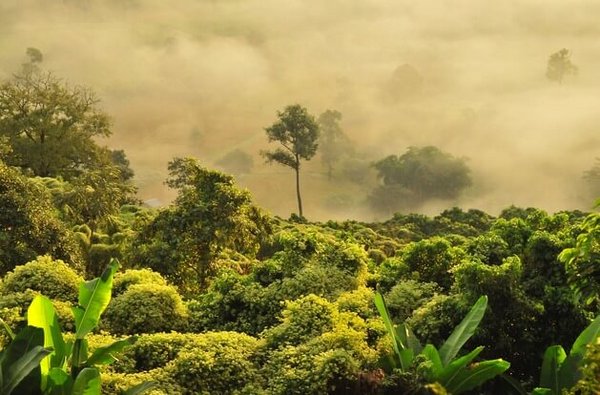- Share this article
- Subscribe to our newsletter
Biodiversity is shrinking faster than previously assumed
The destruction of important biotopes for plants and animals worldwide is happening even faster and more widely than previously assumed: this was the warning of scientists at the University of Hamburg in August 2019, calling on national governments all over the world to commit to sustainable land management.
The scientists have drawn up forecasts for biodiversity hotspots – 33 areas worldwide which are both rich in biodiversity and particularly endangered. They paid special attention in the study to the influence of agriculture and climate change. All the hotspots together account for only 2.5 per cent of the world’s surface, but are home to over 50 per cent of all the world’s plant and vertebrate species.
According to the forecasts, climate change is a long-term threat to biodiversity, while agriculture can wreak major destruction in the short term. The study shows that for the next 30 years the consequences of expanding land area under cultivation are serious, because they directly destroy the natural biotopes. The researchers say that 9-13 of the 33 hotspots are losing all their pristine vegetation. By contrast, in only 2-6 hotspots is climate change having a significant effect over more than half of the area.
Seriously endangered areas include locations in the Philippines, the Caribbean, Madagascar, tropical Africa and the Amazonas rain forest, where there is a particularly large number of native plant species. This is because in these locations the population is growing very rapidly, and needs larger and larger areas for agriculture. At the same time, only a few biodiverse areas are protected by nature conservation.
The study also shows that the hotspots particularly at risk are those where just a little vegetation is still intact. In at least nine hotspots all the species that are only found there are threatened with extinction, according to the researchers.
(University of Hamburg/ile)
Read more:
Habel J C, Rasche L, Schneider U A, Engler J O, Schmid E., Rödder D, Meyer S T, Trapp N, Sos del Diego R, Eggermont H, Lens L, Stork N E (2019): Final countdown for biodiversity hotspots, Conservation Letters, doi.org/10.1111/conl.12668





Add a comment
Be the First to Comment